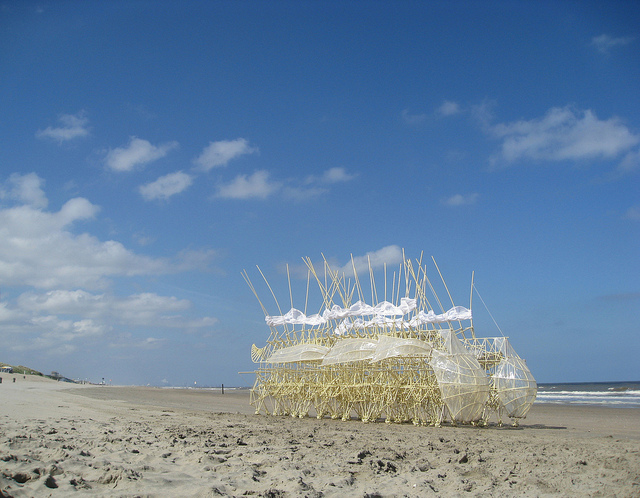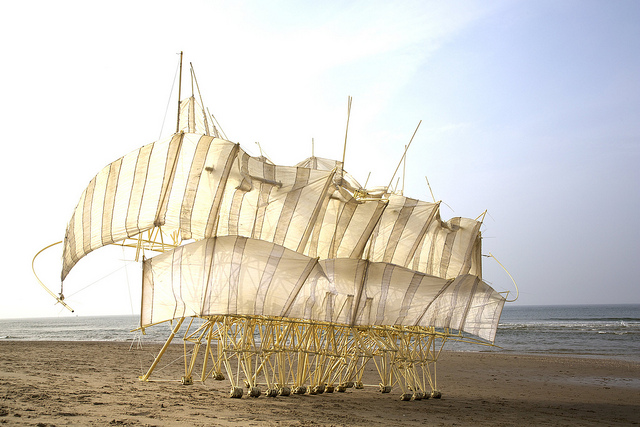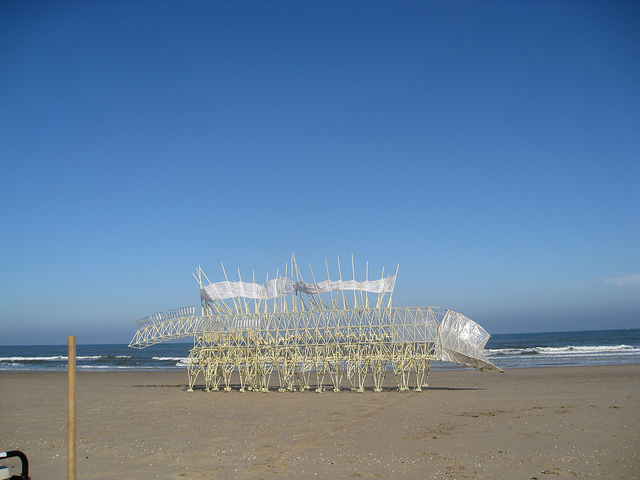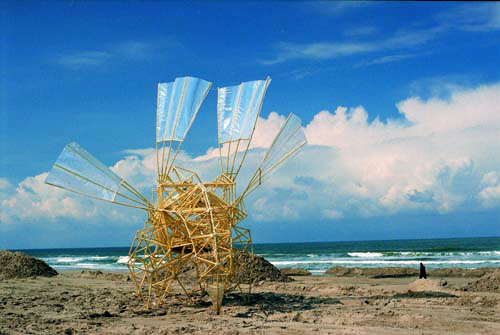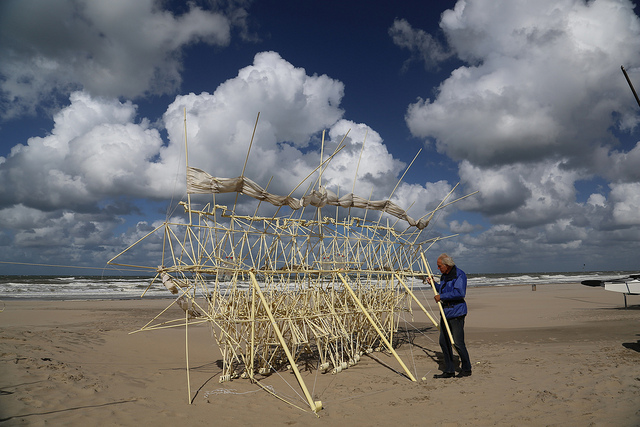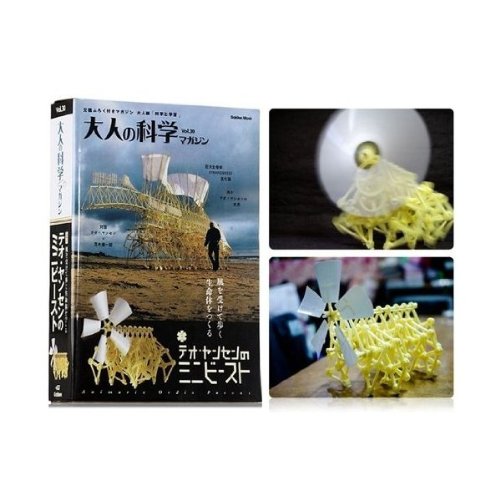Strandbeest is Dutch for Sand Animal, and these kinetic sculptures that capture the winds along the Dutch beaches and turn them into the fuel for the leg movement of these animal-like machines seem very much like they are alive.
They are the creation of Dutch artist Theo Jansen.
He says he hopes to get them to the point of self-sufficiency that they will continue to 'live' in the sand dunes of the Netherlands coast even after he is gone.
The mechanism used both for capturing and storing wind energy and turning that stored energy into leg movements are truly ingenious. You can even buy a little Strandbeest Kit to make your own miniature versions.
From the project page:
Self-propelling beach animals like Animaris Percipiere have a stomach . This consists of recycled plastic bottles containing air that can be pumped up to a high pressure by the wind. This is done using a variety of bicycle pump, needless to say of plastic tubing. Several of these little pumps are driven by wings up at the front of the animal that flap in the breeze. It takes a few hours, but then the bottles are full. They contain a supply of potential wind. Take off the cap and the wind will emerge from the bottle at high speed. The trick is to get that untamed wind under control and use it to move the animal. For this, muscles are required. Beach animals have pushing muscles which get longer when told to do so. These consist of a tube containing another that is able to move in and out. There is a rubber ring on the end of the inner tube so that this acts as a piston. When the air runs from the bottles through a small pipe in the tube it pushes the piston outwards and the muscle lengthens. The beach animal's muscle can best be likened to a bone that gets longer. Muscles can open taps to activate other muscles that open other taps, and so on. This creates control centres that can be compared to brains.
